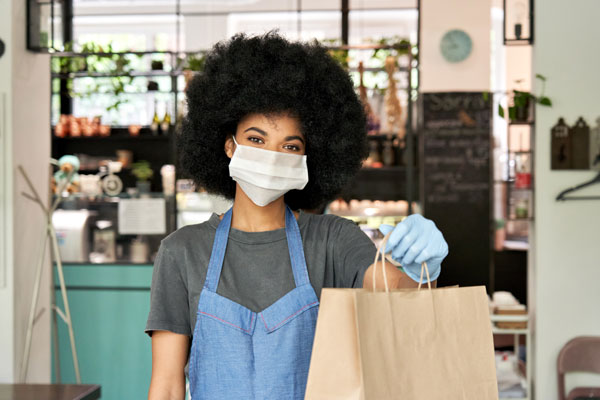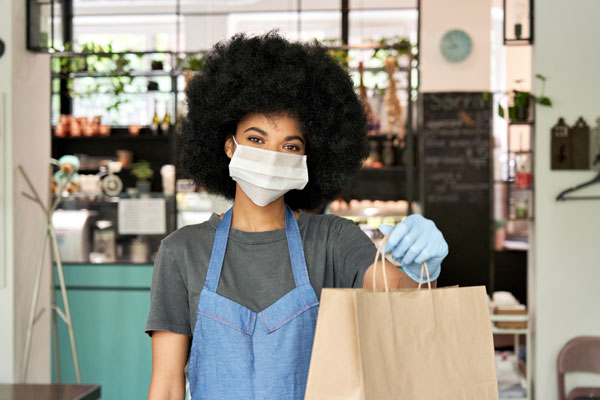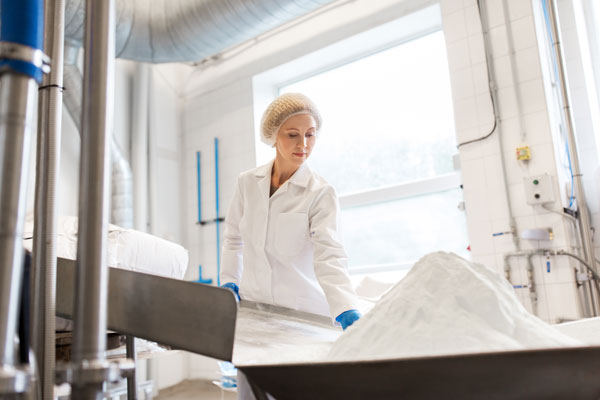Overview
- The food and beverage industry faces unprecedented challenges brought by COVID-19, including demand shifts, shutdowns, and unpredictability.
- RFgen’s supply chain experts discuss specific impacts they’re seeing on our customers, like how they’re adapting to shifting production schedules, fluctuation in demand and the need for traceability.
- Mobile barcoding is emerging as an answer to increasing agility and efficiency while creating safer operations with social distancing.
Food and beverage manufacturers have made quick adjustments to stay operational in the face of COVID-19. Challenges include shifting market demand, restaurant shutdowns, and unpredictable supply chains.
From March to July alone, meat and poultry sales increased 35%. Restaurants lost $120 billion in sales from March to May, negatively impacting the wholesale and distribution markets.
RFgen serves a wide range of customers in the food and beverage industry, from manufacturers to distributors. Our experts work closely with many of these customers who have adjusted operations because of the pandemic.
We sat down with five of these experts to get their insight into what’s changed (and what hasn’t) in food and beverage due to the COVID-19 impact on food and beverage companies and how they are rising to the challenge.
You May Also Like: Using Technology to Build Resiliency in Manufacturing »
Shifting Production to Meet Changing Demand
“Some of our customers manufacture food products that supply both grocery stores and restaurants,” explains RFgen’s Global Sales Manager and enterprise mobility expert Jay Eddinger.
With grocery demand surging and restaurant demand falling, these companies have had to make significant adjustments.
Eddinger describes some of these changes: “Running smaller shifts around the clock to keep up with grocery demand while maintaining social distancing.”
Some of these companies are turning to automation technology like mobile barcoding to augment these stressed workforces. The flexibility of such mobile data collection solutions boosts efficiency and productivity while increasing nimbleness to adjust to changes with minimal downtime. Mobile barcoding is a cost-effective addition that quickly pays for itself—ideal during a budget-conscious time.
Agility is crucial. Other customers have seen demand skyrocket.
Erica Kelly, RFgen’s Customer Success Manager, illustrates several examples: “One of our customers that manufactures DIY garden kits saw demand surge overnight. More people were staying at home and gardening.”
“Another customer, in consumer goods packaging, experienced increased production in response to the need for more individually packaged grocery goods.”
Mobile supply chain software helped the company re-allocate work assignments to adjust to the sudden shift in demand.
Erica adds: “It also gives their workers the tools they need to operate more efficiently and fulfill a higher number of orders, safely, each day.”
Related: Grocery Supply Chains Facing Major Challenges From Shifting Consumer Preferences »
Rapid End-to-End Traceability Requirements
Demand fluctuations aren’t the only concern.
Eddinger explains: “With so little known about the virus, some food manufacturers worry about the possibility of COVID-19 transfer via packaged foods, like with listeria or other foodborne illnesses.”
These companies are looking for robust traceability solutions for ingredients and end products in case of a recall.
But “paper-based recording can take weeks to track contaminated products.” This lengthy time frame won’t work with today’s fast-moving pandemic conditions or with government traceability compliance.
That’s why many of food and beverage manufacturers need high data granularity.
Eddinger explains why this is important: “If there is a recall, you can efficiently trace only the contaminated ingredients and pull affected products from distribution. This minimizes losses and helps save lives.”
Every time a worker scans a barcode or a device collects data, that information is sent to the enterprise resource planning database (ERP) in real-time. As material flows through the warehouse or shop floor, every transaction is recorded to automatically create an accurate path of traceability. This means you can track every movement of raw materials, ingredients, finished products or even scrap throughout your operation.
Adjusting Workflows for Social Distancing and Safety
Adjusting to new requirements for social distancing and safety has been another challenge, says Regional Account Manager, Scott McKenzie.
McKenzie provides an example from a recent customer: “A large, packaged food manufacturer had to increase its number of shifts, each with fewer workers, to meet social distancing requirements and keep up with increased demand.”
Increased spacing was also required: “They had to physically move production lines to increase the space between them. To further enhance safety, each employee is provided with their own Personal Protective Equipment (PPE).”
RFgen’s Bill Arban, an enterprise software and customer relationship specialist, describes how these modifications increase operating costs:
“More shifts and overtime hours raise associated employee costs. Companies must allocate funds for new sanitation measures and PPE. These ballooning overhead costs can quickly eat into any additional revenue from added demand.”
Mobile barcoding solutions provide a means to augment smaller workforces, increase performance and reduce operating costs while also enhancing social distancing and sanitation.
See Also: Keeping Our Essential Workforce Safe »
Conclusion
With COVID-19 cases escalating, traditional operations are no longer effective on their own. The COVID-19 impact on food and beverage companies has led these companies to adapt to evolving conditions with mobile technology.
RFgen’s experts have seen first-hand how these companies have adjusted. Supply chain software like mobile barcoding enhances existing social distancing and safety initiatives while also reducing costs. This simple transition can improve worker efficiency and productivity to meet increased demand and provide exacting traceability for recall readiness.
As these real-world examples illustrate, many food and beverage companies have successfully risen to the challenge of unpredictability with mobile barcoding and data collection. Your company could be next.








